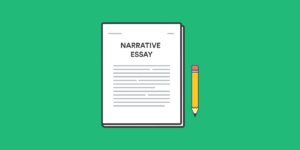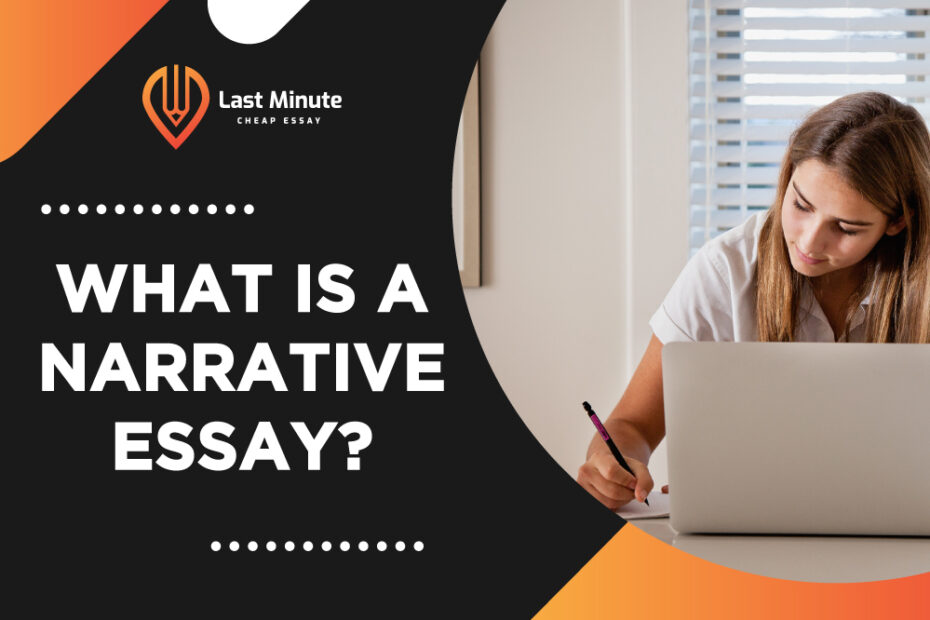A narrative essay tells a story. In most cases, a narrative essay typically allows you to tell your story where you can express yourself and add creativity to make it engaging. It is a type of descriptive essay that helps you to tell your personal experiences. And story in a much more creative and realistic way because you are writing your own story and not presenting others’ statements. This guide will help you to write last minute essays for your projects or exams.
How to Write a Narrative Essay?

Do you want to engage readers with your narration? Don’t worry; with our expertise in providing essay writing services, we have gathered some of the easiest steps you can follow to achieve top-notch essay writing. A narrative essay might be inspired by personal experiences, but making it fun for the readers requires how you portray it.
-
Selecting a Topic
Before writing, make sure you have a story that shows your creativity and makes it interesting for the readers. Gather all the information you need for writing on a particular incident or subject, think of the events that make it funny, and try to add more humor to it because the audience loves to have fun. Think of the climax that should be out of the box and no one could have predicted. In this way, you will have all the attention you want from your readers, and they will binge-read it because of the different climaxes, including plots and twists to make it more interesting and read-worthy with some funny characters or incidents, but try to be realistic. Focus on your tone, and don’t try to sound too fancy or harsh with your words; otherwise, it can be a mood changer.
-
Plan Your Story
Outline the key elements of your narrative, including the characters, plot, climax, tone, and all the important aspects you want when writing a compelling story. Construct a framework of how you want your story to flow so that you can have a proper direction for your narrative essay.
-
Craft a Compelling Introduction
Use more hooks in your introduction to grab the reader’s attention. Make sure the introduction you write harmonizes with your story, which you will address further because your introduction will tell the audience what they will read further. Introduce the settings, characters, and event first and make sure to link that with your conclusion it will create a balance between the narrative essay.
-
Develop the Plot
Try to create more suspense in your story with different plots and humor, but don’t overdo it; otherwise, it will make your writing look cluttered. Use descriptive language to make your narrative essay look more interesting and realistic.
-
Ending a Narrative Essay
The ending of your narrative essay must be linked with your introduction and body of the essay. Make sure the words flow automatically and do not overlap the scenario. Otherwise, it will not have a proper ending, leaving many plots, characters, and events in an undefined manner.
What is The Purpose of Dialogue in A Narrative Essay?
Dialogues in narrative essays serve a crucial purpose; they bring characters to life and authenticity to your storytelling. Like a skilled puppeteer, dialogue provides writers with a voice for their characters, letting them speak directly to their readers and telling their personalities to them. Dialogues inject energy into characters and events, making them look more realistic and fun to read. It gives life to your story, which your readers will enjoy. It fosters a connection between the characters and readers, making your story more immersive and memorable. It assists the progress of the plot by recreating peoples’ discussions and ideas.
Begins with a contextual setting, introducing the scene and the characters. Tell about your scene, for example, “It was a clear sunny day, birds were chirping”, to grab the attention of your readers and let them know about the view and day to give them a brief knowledge about your surroundings. Introduce the characters briefly in your introduction. Let’s suppose “two friends were sitting in the garden, under the tree”. Introduce the dialogue naturally between the characters when they are having a conversation; it must be written clearly and properly within punctuation marks like “I can’t believe it’s a good sunny day, Sarah excitedly tells this to Mia” Following this, Mia agrees to her “yeah! I wanted to come here in a sunny day finally it’s that day”. Avoid putting extra dialogue and punctuation. It will not create a good impression on readers, leaving them without reading your story.
Dialogue delivery should not be done informally but should develop interest among the readers. Do not go overboard with your dialogue. It will confuse the readers and won’t make it look interesting. By following these steps, you can effectively incorporate dialogues in your narrative essay, making it look complete and understandable.
How to Write a Personal Narrative Essay?
A personal narrative essay is nonfictional and based on real-life events. Here, you need to tell your own story or incidents that happen with you. Try to create a hook related to your story that grabs attention and sets the tone of your essay. Which you will use in the rest of your narrative essay. Writing a personal narrative essay is easy. All you have to do is provide your readers with a vivid image of what incident happened to you. For example, “the moment I stepped out in the sun, I began to feel dizzy; I walked further and saw a bench in front of me. I sighed and sat there for a couple of minutes”. This will help your readers gauge your story till the end, making the picture clearer for your readers.
Provide background of your story as to why you went out during the hot sunny day so it will make your readers understand the urgency of doing it so that no further questions will be asked by the readers. Try not to make things that did not happen. It will lose the trust of readers and writers. To end your narrative essay, provide a deeper connection with your essay. Which will have a more powerful impact on your readers. By following this structure, you can effectively write a personal narrative essay, keeping it simple and less confusing yet engaging story.
How to End a Narrative Essay?
For seasoned or brand-new writers, concluding a narrative essay can be problematic. But with some simple steps, it can be done easily. Use the conclusion to reflect on the significant story you have shared according to your experience. Try to match the narrative essay with the beginning. And the body of your essay so that it won’t feel incomplete. Offer a sense of closure by wrapping any loose ends if there are any. Otherwise, it will not create a good impression of leaving your story unattended. Try to generate more emotion in your ending that will create a strong connection of trust between the reader and writer.
What Should a Writer Plan to Include in the End of a Narrative Essay?
Upon concluding, the writer should involve the main points of the story. Like what lesson the writer was trying to give, summarize the main points of the narrative essay. And write about your experience and what you were feeling throughout while writing it. A compelling conclusion will help readers link it with the start of the narrative essay. In the end, leave room for interpretation and opinion, which you can get from the readers. This guide will help you to become a better writer by writing a narrative essay and eliminating doubts in your mind.

